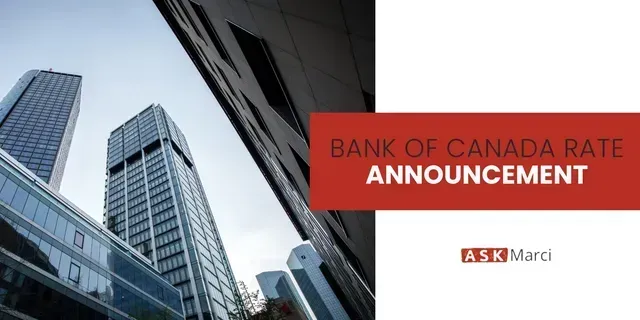Tempered Rate Hike Forecasts for 2019
Floating-rate mortgage holders who had feared the Bank of Canada’s recent full-steam-ahead view towards continued rate hikes can take a breather—at least for now.
The central bank adopted a more dovish stance at yesterday’s rate hold announcement, which confirmed a growing chorus of analysts who now expect the bank to take a slower pace on future rate hikes.
“Recent events aren’t likely to push the bank off of a tightening path, but they do remove any urgency in getting to a neutral policy rate,” wrote Brian DePratto, a senior economist with TD Bank. “We no longer expect the Bank of Canada to hike its policy interest rate in January. Spring 2019 now appears to be the more likely timing, allowing for the bank to ensure that the growth narrative is back on track.”
Just a month and a half earlier, when the BoC hiked rates for the fifth time in 15 months to 1.75%, it made clear its intention to bring rates to a “neutral range” it says is needed to keep inflation in check while not hindering the economy. It estimated that range to be between 2.50% and 3.50%.
The BoC reiterated this intention yesterday, but admitted it may now take longer to get there. “The appropriate pace of rate increases will depend on a number of factors,” the bank’s statement read.
And again this morning, during a speech in Toronto, Governor Stephen Poloz reiterated that the pace of increases will be “decidedly data dependent.”
“We will continue to gauge the impact of higher interest rates on consumption and housing, and monitor global trade policy developments,” he said. “The persistence of the oil price shock, the evolution of business investment and our assessment of the economy’s capacity will also factor importantly into our decisions about the future stance of monetary policy.”
Bond Market Skeptical About Future Rate Hikes
Despite the Bank of Canada’s commitment to higher rates, the bond market is signalling it’s not so sure.
The Canadian 5-year bond yield, which leads fixed mortgage rates, has plummeted to a six-month low.
“The bond market has doubts about the Bank of Canada’s commitment to rate hikes in 2019,” Adam Button, Chief Currency Analyst at ForexLive, told CMT.
“Those doubts turned to outright defiance after [yesterday’s] statement,” he added. “The market is now pricing in fewer than two rate hikes in 2019. Before the BoC statement, the market was looking for a 65% chance of a hike at the January 9 meeting. That’s plunged to 25% and now a hike isn’t fully priced in before mid-year.”
What Does This Mean for Mortgage Rates?
Mortgage rate observers can be forgiven for expecting fixed rates to fall. With a decline in bond yields of this magnitude, that’s what you would normally see.
But Robert McLister, founder of rate-comparison website RateSpy.com, explained that things are different this time.
“Normally we’d have seen at least one bank chop advertised fixed rates by now. But not this time. Banks are purposely padding margins,” he wrote. “On top of this, banks are increasingly building in small premiums to offset the policy/rate-driven slowdown in housing/mortgage growth, late-cycle housing/economic risk, and more stringent capital rules.”
Floating Rates Looking Attractive Again
With inflated fixed rates and the prospect of fewer Bank of Canada rate hikes over the next year, variable and adjustable-rate mortgages are looking more appealing to an increasing share of mortgage shoppers.
Nearly a third of CMHC-insured homebuyers (31%) chose a variable-rate mortgage over a fixed rate in the third quarter of 2018, the housing agency reported last week.
This is the highest share of high-ratio borrowers to choose variable rates since CMHC began tracking these figures. Typically no more than 20% go variable, according to the agency’s historical data.
McLister said the best variable rates for default-insured mortgages are currently around 2.80%, or 3.04% for those who are refinancing.
“That gives you at least a three-rate-hike head start over conventional 5-year fixed rates,” he noted.
This article was written by Steve Huebl and was originally published on the Canadian Mortgage Trends on December 10th 2018.
Share












